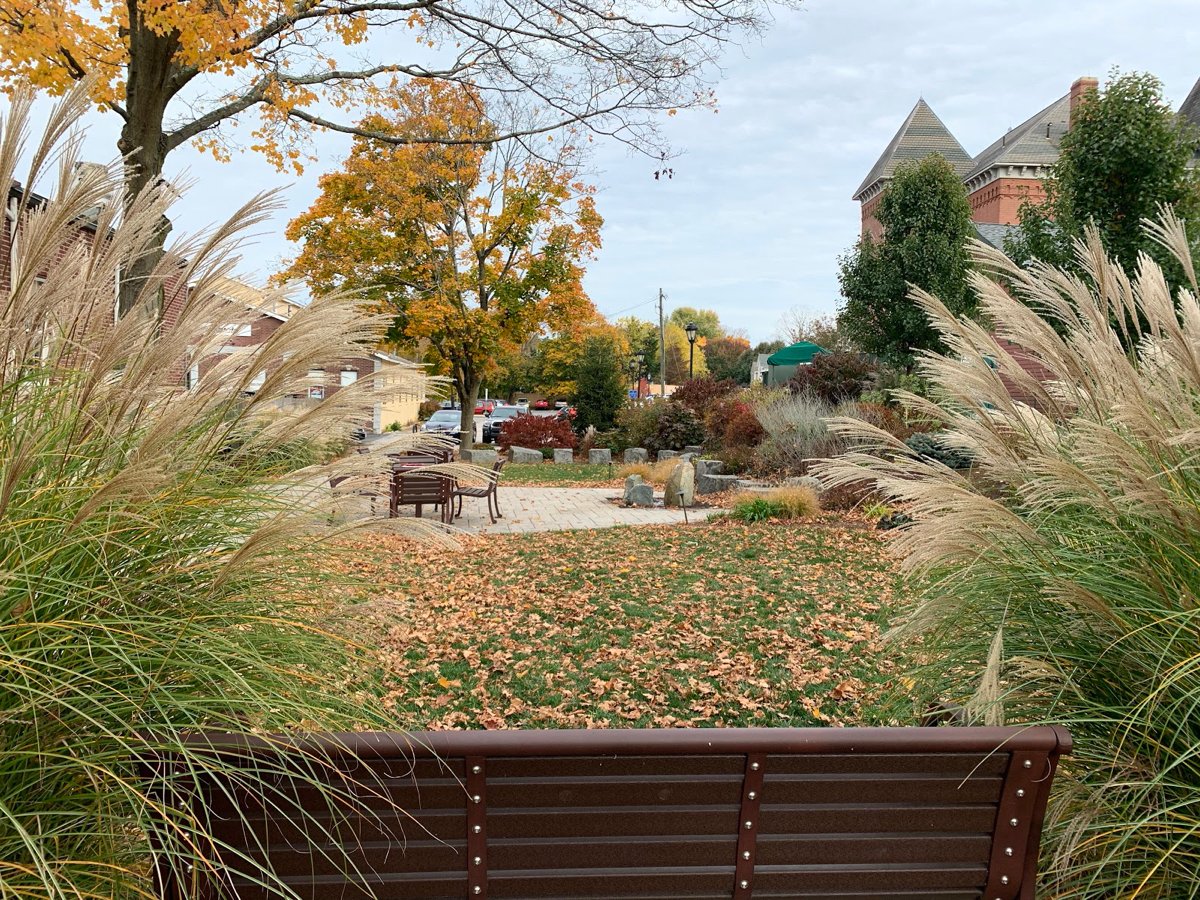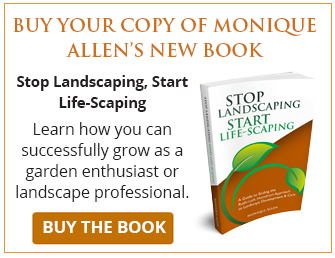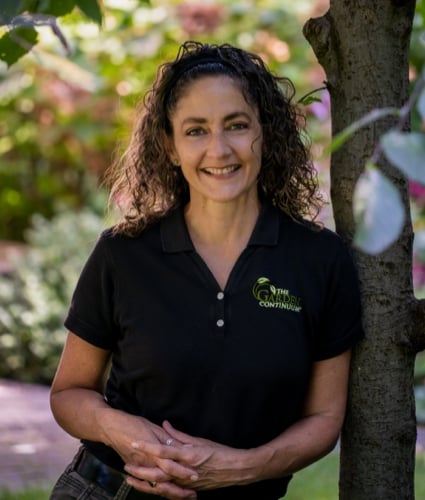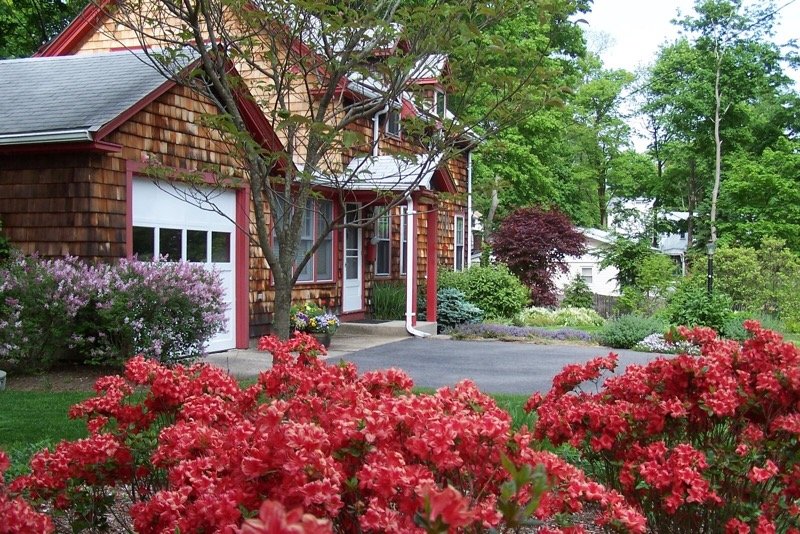Here’s a simple but crucial piece of information that anyone interested in their landscape needs to remember: landscapes are living entities. They are complex, integrated ecosystems comprised of plants that sprout, grow and eventually die; of creatures large and small that live on, in, and around those plants; of rocks, soil, and minerals that retain moisture, dry out, erode, and transform. That’s why I refer to landscapes by the more realistic term, “Life-Scapes”, to remind us of this fact. In short, they are highly dynamic and should not – cannot – be thought of as static set-pieces.
But here’s the problem: we tend to approach landscape design as a finite project. We aim for permanence, for finished, for complete. The minute we get the inclination to do something, to create a new space, we want to simply buy it, built it, and be done with it. And that’s not how it works. That mindset is symptomatic of a bigger problem – we think of a landscape as a thing, a finite project, and not a process.
 Straw Hat Park in Medfield took 3 years to design, obtain town permission, and raise funding. Now, entering its 5th year as a beloved park, it’s starting to fill in and really show off the intention of our design.
Straw Hat Park in Medfield took 3 years to design, obtain town permission, and raise funding. Now, entering its 5th year as a beloved park, it’s starting to fill in and really show off the intention of our design.
Instead of rushing to complete a project, slow down and consider the landscape – what it is now, what you’d like it to be, and how it will evolve naturally – in terms of a life. Give some serious thought to why you want to do something with the land. Ask, what is the resulting experience you hope to have once you’ve developed your landscape according to your desires. Embrace the unfolding of that experience and the ultimate impermanence of what you think is final...because nothing is final with life other than death.
There are a number of things you could think about to shift your mindset before you start any kind of work:
Know your “why.” Why do you want to invest the time, money, and effort into developing a particular landscape design? What do you want to get out of it? Who will use it and when? What will be different once you complete this bold transformation of the land? The answers to questions like these will shift the landscape from a “thing” to a more dynamic, interactive status that will provide new experiences for you and anyone else using it.
Know your land. It’s absolutely essential to accurately assess the landscape you have before doing anything to it, so get to know your land. Walk around and determine the water sources. Check the type of soil. What’s the typography like? What vegetation already exists and why? Once you understand your land you’ll be able to accurately assess the viability of your new landscape concept. It’s easy to have your mind fixed on a particular feature or features without really understanding if the terrain and environment will support it. If your ideas are incompatible with the land, you’re likely to end up spending an enormous amount of money creating something that may be labor-intensive to care for or worse, unsustainable.
Know your limiting factors. After performing the steps above, you’re now in a position to accurately determine the limiting factors that could affect your landscape plans. Does what you want to do align with the land and its natural resources? How difficult will it be to accomplish your goals?
For example, if you imagine a big, wide-open lawn where your kids will play touch football but you walk out your back door to forested land, you understand that getting a good lawn is going to be difficult. And difficult often equates with expensive. However, if you’ve been dreaming about woodland paths and quiet meditation gardens with shade plantings and you walk out to woodland, achieving your outcome will be much simpler and less expensive.
Know what ideas will work. All this homework will start to prepare you to generate realistic ideas about what concepts will fit your lifestyle, budget, and landscape. As you start to look through resources online and in books and magazines you’ll have a much better understanding of what makes sense to pursue now versus what may need more time to think through. Maybe, this foundational information will help you to accept some of the limitations you have and encourage you to consider a new approach that will ultimately be a better fit.
Know your team. Virtually every landscape design involves some level of heavy lifting. Are you capable of doing the necessary construction yourself and if so, how long will it take and do you have that kind of time available? If the answers are “no” then you need to determine what outside skills and resources you have to tap to get the landscape of your dreams. Be realistic about what you can accomplish so you can be realistic about the team you’ll need to assemble.
 The critical takeaway here is that landscape development is a process and not just one project. Of course, there are many projects within the process, but I’m hoping you will look at those projects now as a dynamic and fluid part of a bigger system. There’s peace-of-mind that comes with understanding fully what you want to do and what it will take to do it. Then it becomes a fun and exciting endeavor to invest your time, effort, and money into something you know has the power to transform your outdoor experience from what it is today to what you imagine it can be.
The critical takeaway here is that landscape development is a process and not just one project. Of course, there are many projects within the process, but I’m hoping you will look at those projects now as a dynamic and fluid part of a bigger system. There’s peace-of-mind that comes with understanding fully what you want to do and what it will take to do it. Then it becomes a fun and exciting endeavor to invest your time, effort, and money into something you know has the power to transform your outdoor experience from what it is today to what you imagine it can be.
Buy the book titled "Stop Landscaping, Start Life-Scaping" now!
Another important takeaway is that landscape development is a long game that includes thinking about landscape evolution, succession, and the maintenance that will be needed from day one onward. Remember, nothing is static. Try to embrace the impermanent nature of nature. It looks static from day to day, but she is always on the move, our planet is breathing and evolving right under our feet.

TWEETABLE TIP
Landscape development is a long game that includes thinking about landscape evolution, succession, and the maintenance that will be needed from day one onward. Remember, nothing is static. Embrace the impermanent nature of nature.
VIA @GardenContinuum

Don’t be afraid to dream big, though, even if it’s something you’re not capable of accomplishing all at once. I encourage you to think about phasing in your landscape development over time as a way to get more of what you want so you don’t have to compromise what you do. If you have the vision, you’ll now also have the knowledge and understanding of how to eventually accomplish it all. There’s the excitement of anticipation in the long game, so enjoy it. I certainly do!




 Straw Hat Park in Medfield took 3 years to design, obtain town permission, and raise funding. Now, entering its 5th year as a beloved park, it’s starting to fill in and really show off the intention of our design.
Straw Hat Park in Medfield took 3 years to design, obtain town permission, and raise funding. Now, entering its 5th year as a beloved park, it’s starting to fill in and really show off the intention of our design.



Leave a comment